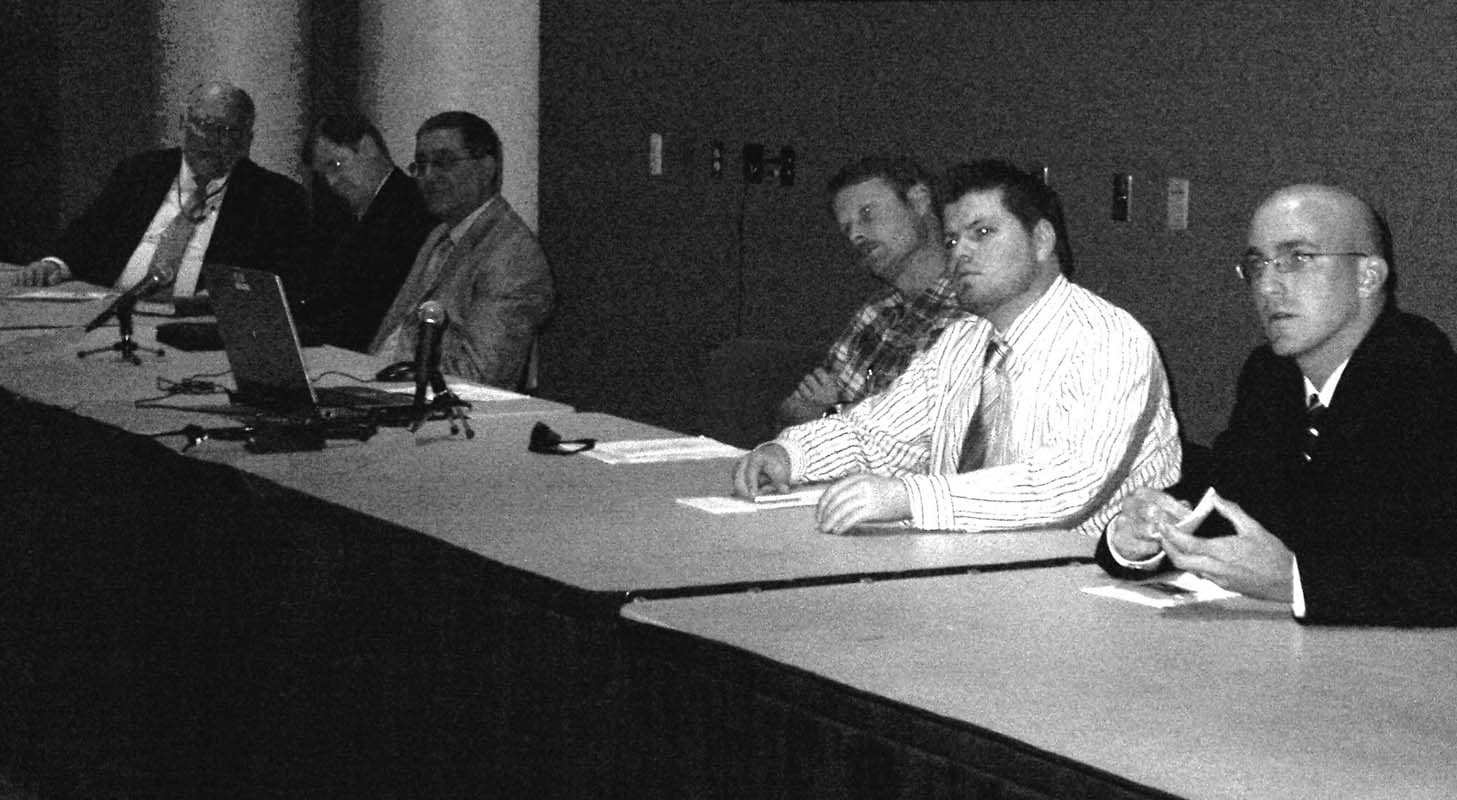Counterinsurgent Specialists Speak to Mason Students
 By Broadside Correspondent Jared Trice
By Broadside Correspondent Jared Trice
A panel of counterinsurgency specialists spoke on the implementation and concept of the Improvised Explosive Device in Dewberry Hall on Wednesday, Sept. 10.
Students of Dr. Burl Self’s geography of insurgency, structure of urban government and political geography classes gathered to learn about these IEDs.
IEDs pose one of the greatest threats to American troops currently serving in the Middle East and remain a constant threat to troops because of their simple construction. There have been an estimated 1,891 IED attacks between January 2007 and January 2008.
The discussion panel was comprised of members of Joint Improvised Explosive Device Defeat Organization, or JIEDDO, a subsidiary program within the Department of Defense, members of the United States Army, Marine personnel who had previously served in the Middle East and members of organizations whose efforts combat IEDs.
Self’s students were presented with a montage of IED devices, a relatively general term, which includes suicide bombs, car bombs and mortar missiles.
“IEDs also pose a threat to citizens within the United States and have already been implemented in the 9/11 terrorist attacks, the Oklahoma City bombing and the bombing at the 1996 Atlanta Olympics,” said Jason Burr, a former Special Forces soldier for the United States Army.
“IEDs, when executed within the U.S., cause not only fear, panic and hate, but also potential negative consequences to the economy,” Burr said.
Various reactions could be seen and heard from students as they were shown militant propaganda footage of the detonation of actual IEDs.
Towards the end of the presentation, students were encouraged to ask the speakers questions. Many of the questions focused on the detection of the IEDs and the specific areas where IEDs are most concentrated. Like land mines, IEDs are not easily detected due to the clever, everyday items in which many IEDs are hidden.
Although the military is constantly developing new technology to detect IEDs, the most effective method of detection is an individual’s familiarity and exposure with the devices.
The number of IED attacks has been on a steady decline since early 2007 and can be attributed to the discovery of weapon caches and tips from local citizens on the location of explosive devices.
